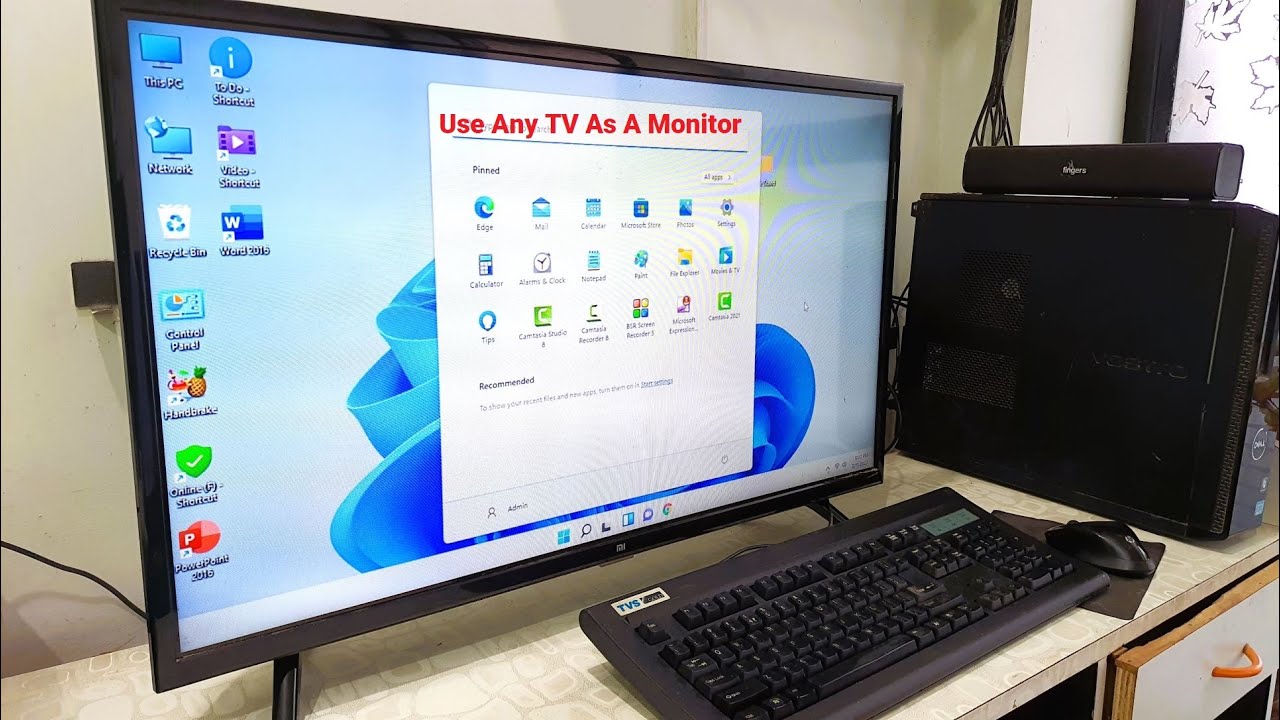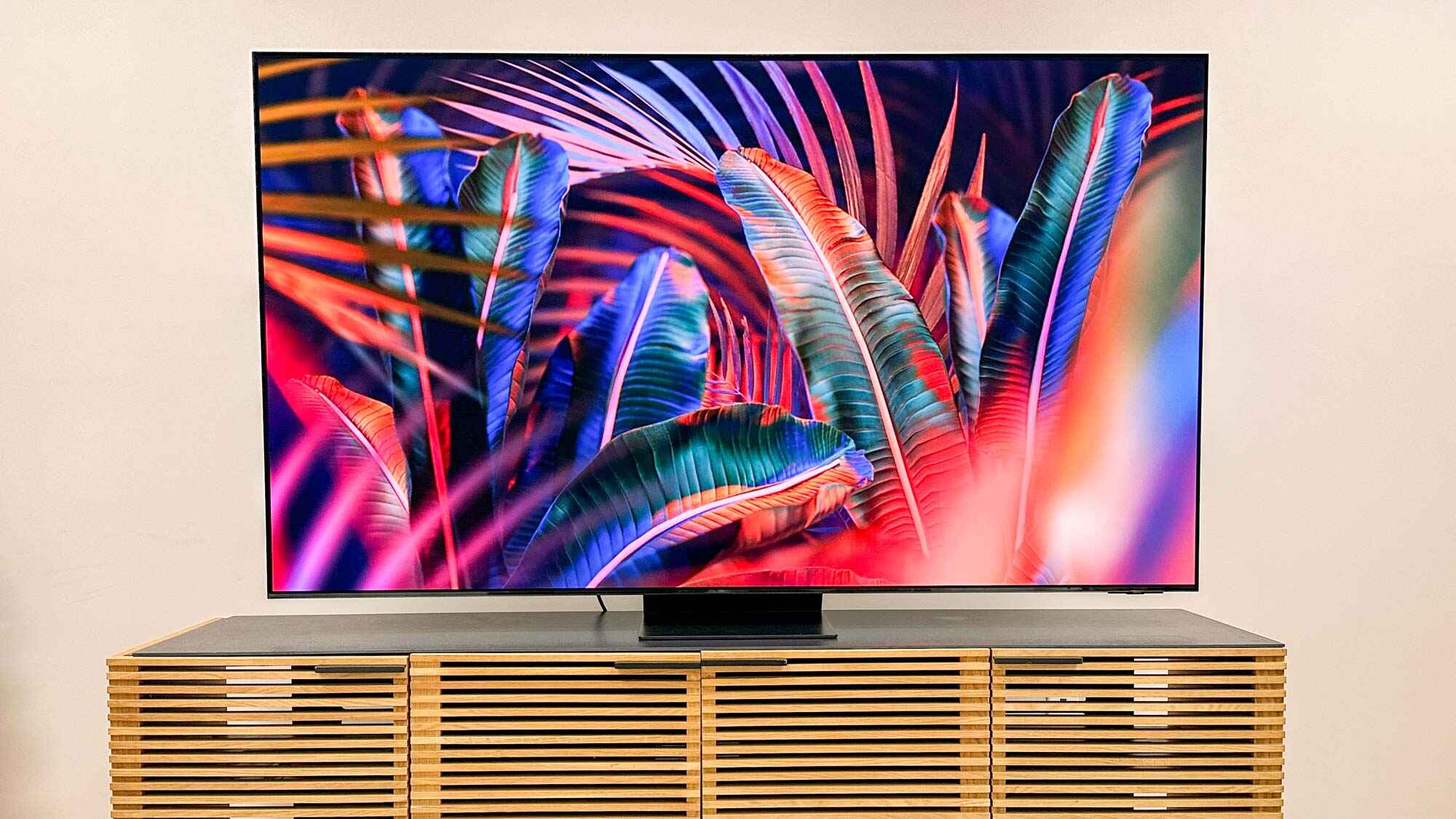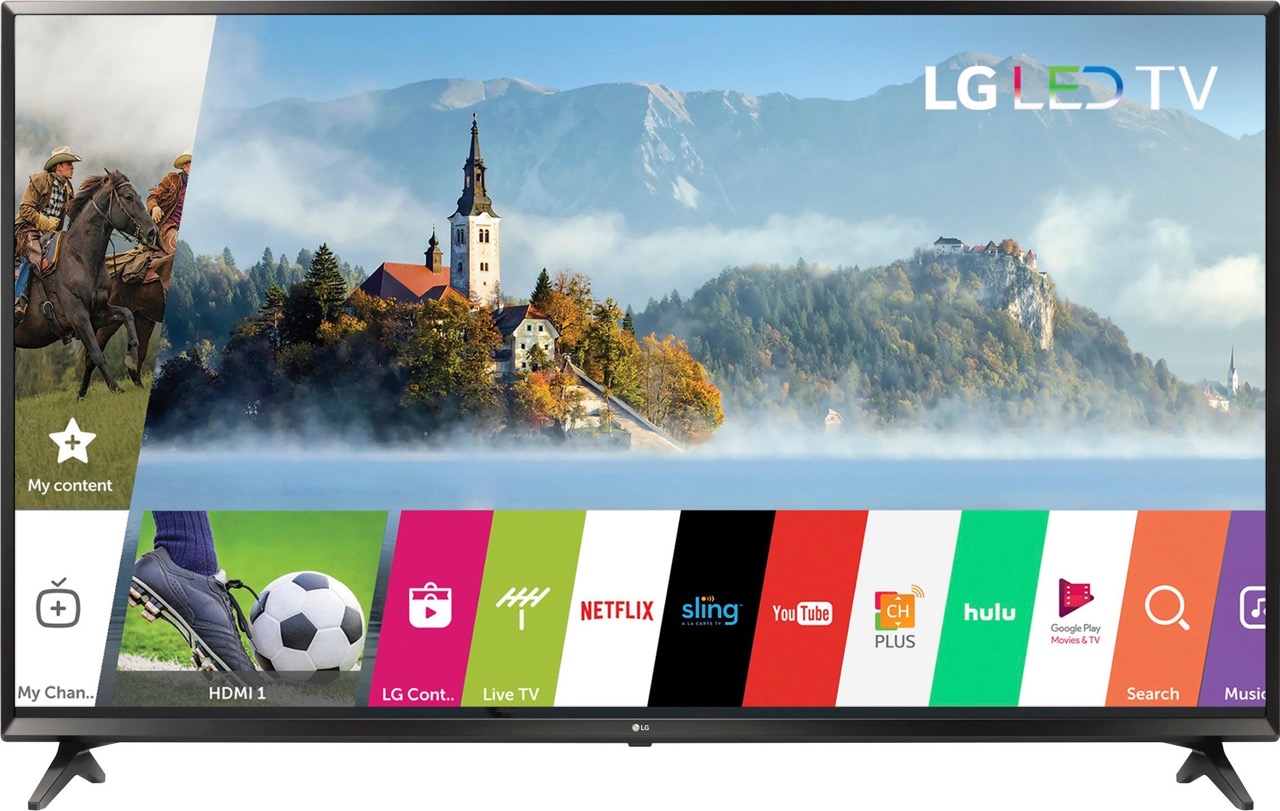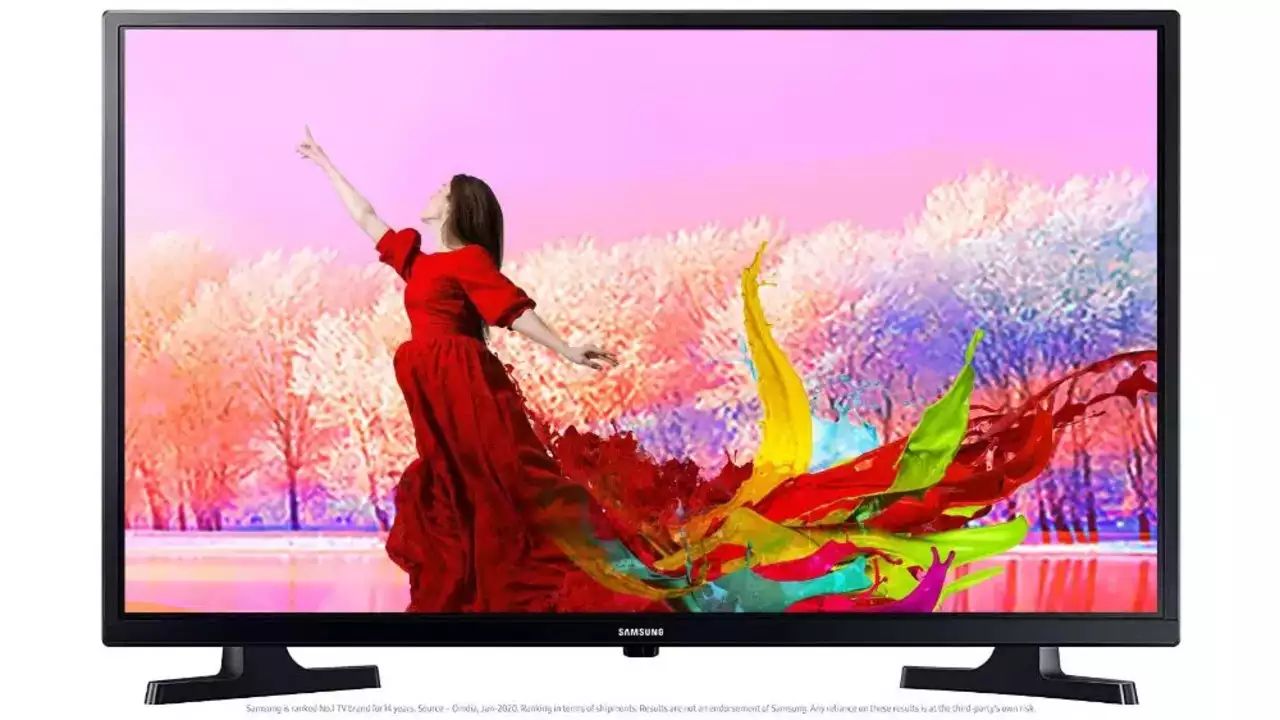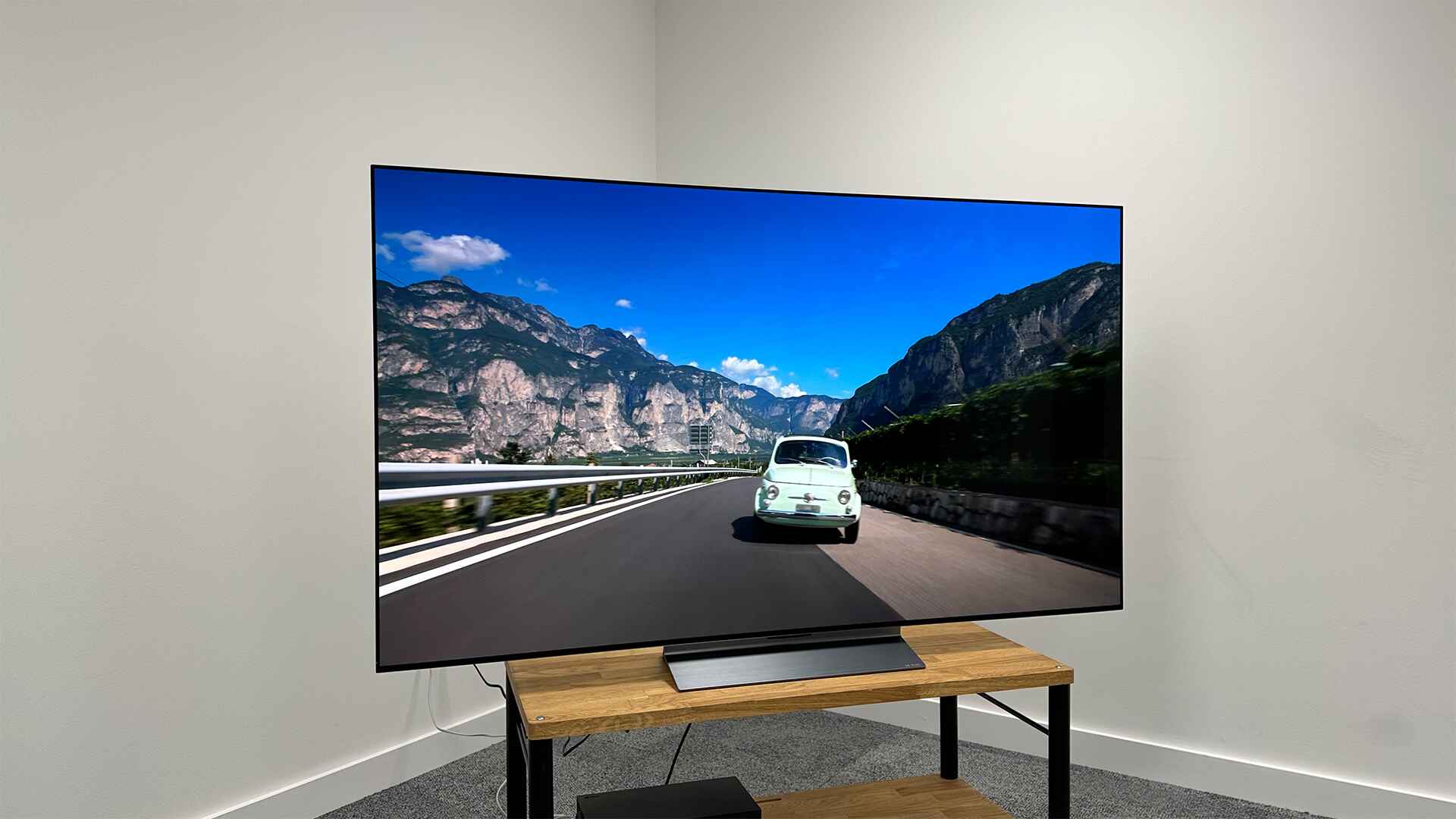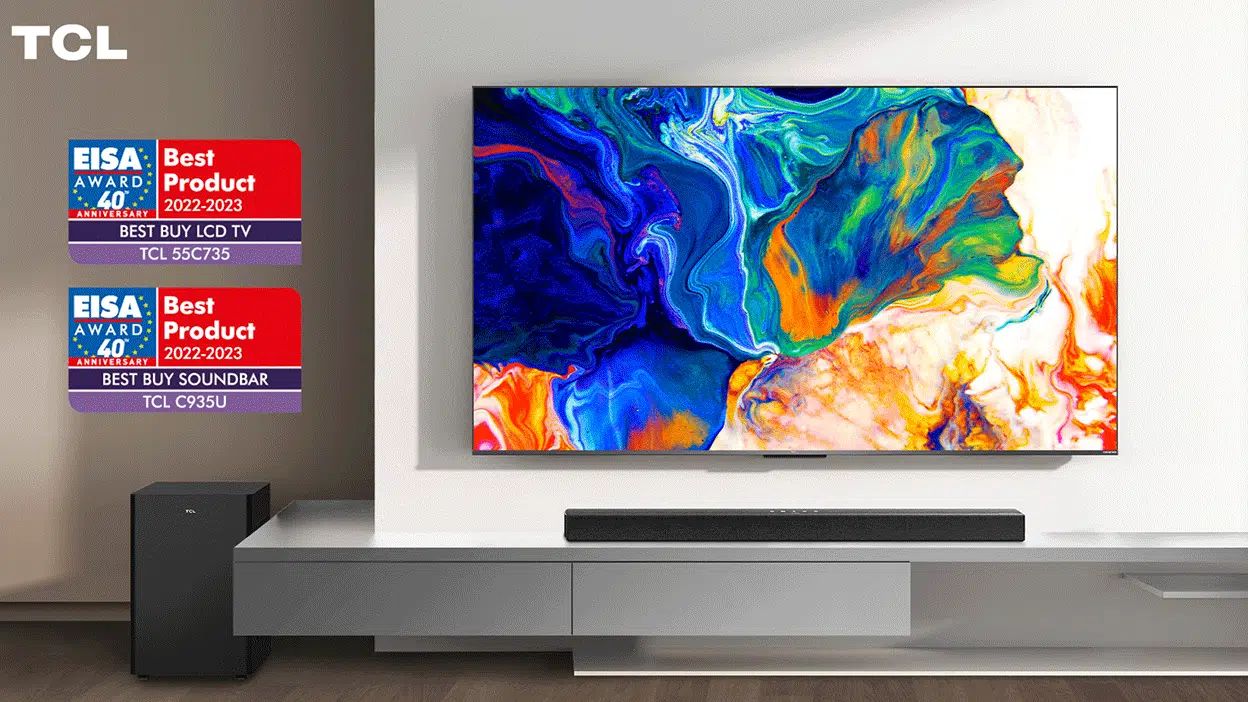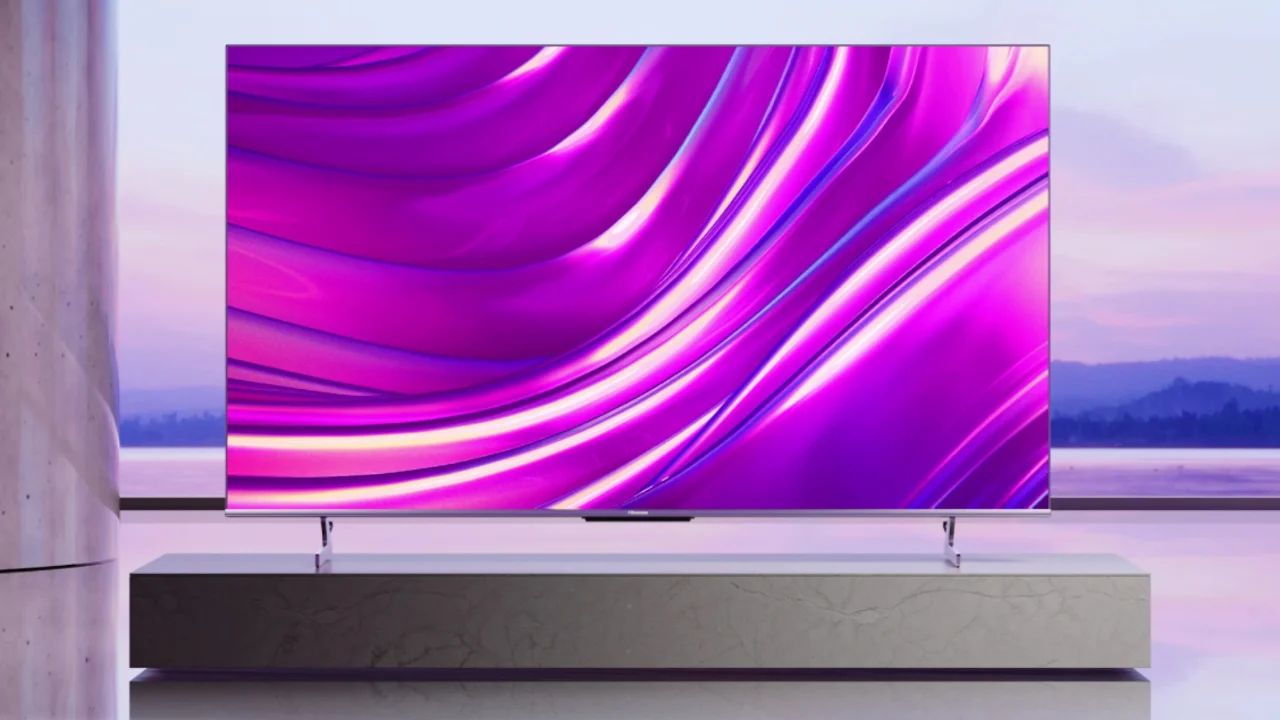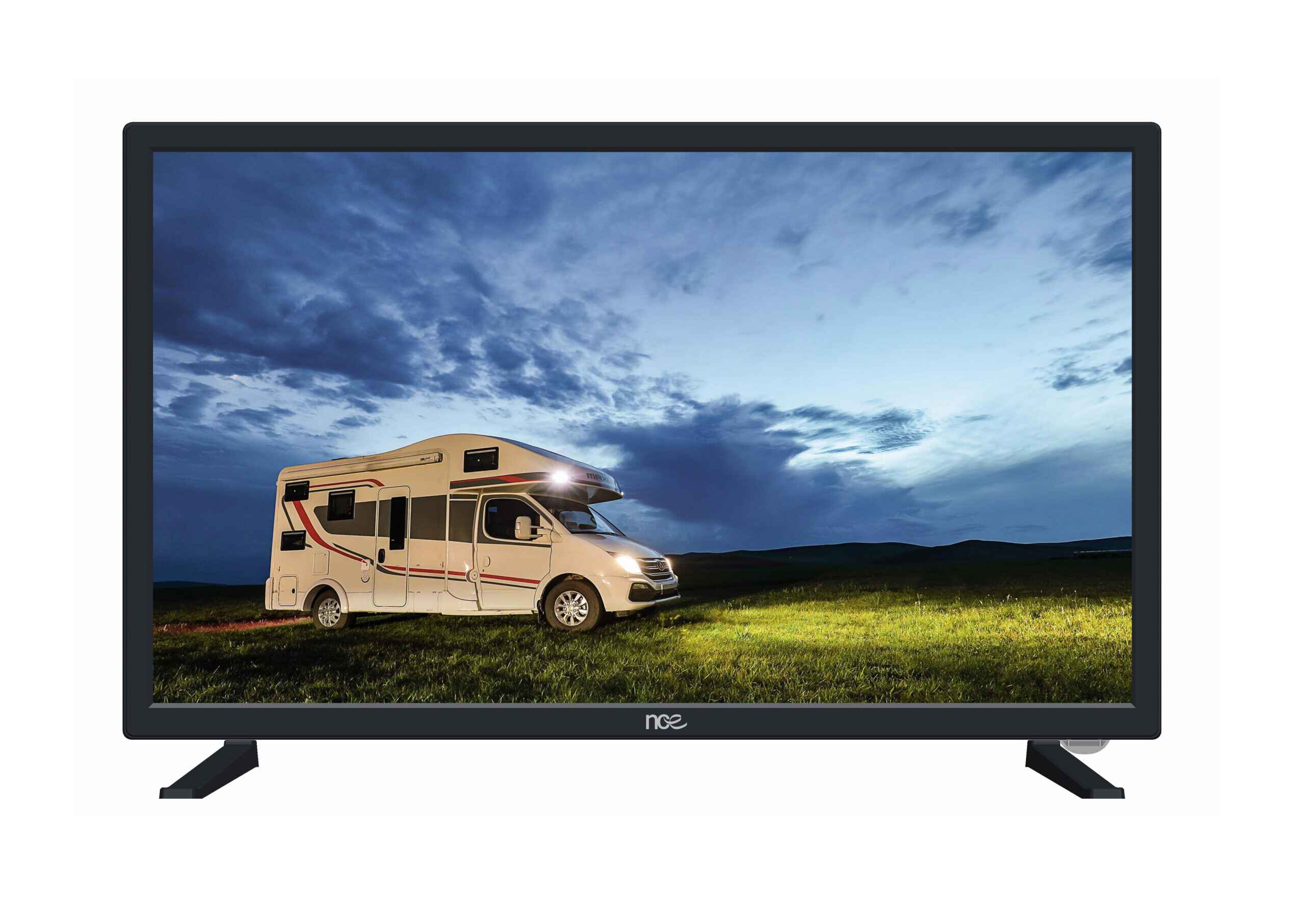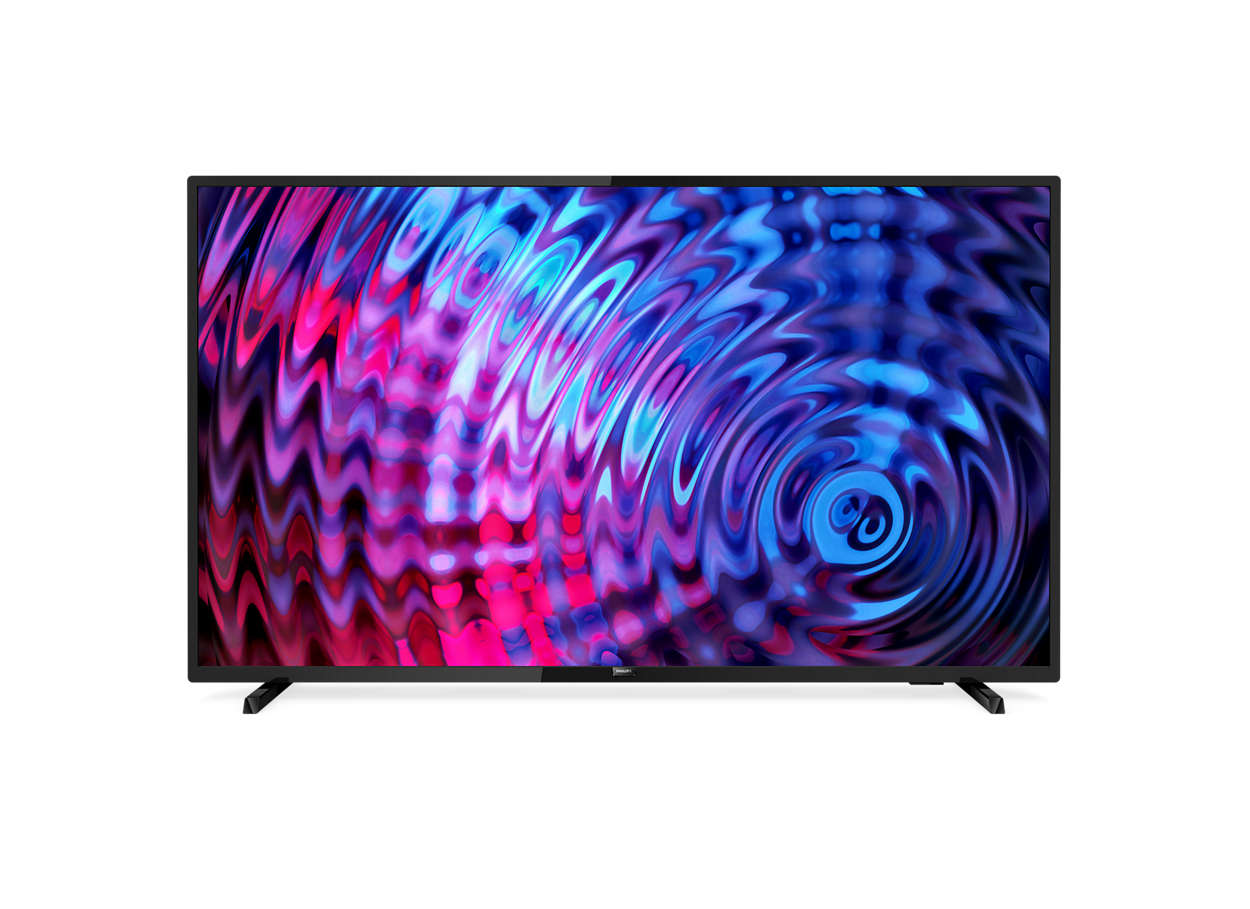Introduction
Technology has revolutionized the way we work, play, and consume media. With the rise of digital content, many people are now considering using LED TVs as monitors to enjoy a larger and more immersive viewing experience. Whether you’re a gamer, a designer, or someone who simply wants a bigger screen for productivity, using an LED TV as a monitor can offer a range of benefits.
LED TVs, known for their vibrant colors and high-definition visuals, have become increasingly popular in recent years. These slim and sleek devices not only serve as great televisions for watching movies and shows, but they can also double as impressive computer monitors.
However, before you dive into the world of using an LED TV as a monitor, it’s important to understand the considerations and steps involved in setting it up. In this guide, we’ll walk you through the process of choosing the right LED TV, connecting it to your computer, adjusting display settings, optimizing picture quality, tweaking audio settings, and improving your overall viewing experience.
By the end of this guide, you’ll have the knowledge and confidence to transform your LED TV into a versatile and powerful monitor that enhances your digital lifestyle.
Choosing the Right LED TV as Monitor
When it comes to selecting the right LED TV as a monitor, there are several factors to consider. These factors will depend on your specific needs, preferences, and budget. Here are some key points to keep in mind:
- Screen Size: LED TVs come in a variety of screen sizes, ranging from 24 inches to over 80 inches. Consider the available space in your setup and choose a screen size that suits your needs. Keep in mind that larger screens offer a more immersive experience, but may require you to sit further away.
- Resolution: Opt for a TV with a high resolution for optimal image clarity. Full HD (1080p) and 4K Ultra HD (2160p) resolutions are popular options. The higher the resolution, the sharper and more detailed the image will be. If you plan to use the TV for gaming or graphic design, a higher resolution is recommended.
- Refresh Rate: The refresh rate refers to how many times the image on the screen is refreshed per second. A higher refresh rate, such as 120Hz or 240Hz, can help reduce motion blur and enhance the smoothness of fast-moving content like action movies or games.
- Connectivity Options: Check for the available connectivity options on the LED TV. Look for HDMI ports, as they provide the best quality and compatibility with computers. Additionally, USB ports and audio output options can also be useful for connecting peripherals.
- Features: LED TVs often come with additional features like smart capabilities, built-in Wi-Fi, HDR (High Dynamic Range) support, and advanced color technologies. Consider which features are important to you and align with your intended use.
- Budget: Determine your budget and look for LED TVs that offer the best value for your money. Keep in mind that while higher-end models may have more advanced features and better image quality, they might also come with a higher price tag.
Remember to read reviews, compare specifications, and do thorough research before making a purchase. By considering these factors, you can ensure that you choose an LED TV that meets your requirements and provides a seamless transition into the world of using a TV as a monitor.
Connecting Your LED TV to Your Computer
Once you’ve chosen the perfect LED TV to serve as your monitor, the next step is to connect it to your computer. Follow these steps to ensure a smooth and hassle-free connection:
- Check the Ports: Most LED TVs and computers have HDMI ports, which provide the best quality and compatibility for connecting the two devices. Make sure both your TV and computer have HDMI ports available. If not, check for alternative ports such as DVI or VGA.
- Get the Right Cables: Depending on the ports available on your TV and computer, you may need to purchase the appropriate cables. HDMI cables are the most common choice. Ensure that the cables you buy are of good quality to ensure a stable and reliable connection.
- Turn off Both Devices: Before connecting the cables, turn off both your LED TV and computer. This will prevent any potential damage to the devices and ensure a safe connection process.
- Connect the HDMI Cable: Take one end of the HDMI cable and plug it into the HDMI port on your LED TV. Then, take the other end of the cable and connect it to the HDMI port on your computer.
- Select the Correct Input: On your LED TV, use the remote control or the buttons on the TV to select the correct input source. If you connected the HDMI cable to the HDMI1 port, choose the HDMI1 input source on your TV.
- Turn on Both Devices: Now that the cables are connected and the correct input is selected on your LED TV, turn on both your TV and computer. They should recognize each other and establish a connection automatically.
- Adjust Screen Resolution: Once the connection is established, you might need to adjust the screen resolution on your computer. Right-click on your desktop, select “Display settings” (or “Screen resolution”), and choose the appropriate resolution for your LED TV. This will ensure that the content displayed on the TV fits properly on the screen.
By following these steps, you can successfully connect your LED TV to your computer and enjoy the benefits of using a larger screen as a monitor.
Adjusting Display Settings
Once you have connected your LED TV as a monitor, you may need to make some adjustments to the display settings to ensure optimal visual quality. Here are some key settings you should consider:
- Brightness: Adjusting the brightness level can greatly impact the overall visual experience. Avoid setting it too high, as it can cause eye strain. Find a comfortable level that allows you to see the content clearly without causing discomfort.
- Contrast: The contrast setting determines the difference between the light and dark areas of the screen. Set it at a level that enhances the richness and depth of colors without making the image appear washed out or overly saturated.
- Color Temperature: LED TVs often offer different color temperature presets, such as Warm, Cool, or Neutral. Experiment with these settings to find one that suits your preference. You may also have the option to manually adjust the color temperature for more precise control.
- Sharpness: The sharpness setting determines the clarity and crispness of the image. Avoid setting it too high, as it may introduce artifacts or distortion. Find a balance that maintains clarity without sacrificing naturalness.
- Aspect Ratio: Adjust the aspect ratio to ensure that the content fits properly on the screen. Most LED TVs have different aspect ratio options, such as 16:9 (widescreen) or 4:3 (standard). Choose the option that matches the resolution and content you are working with.
- Overscan: Some LED TVs have an “Overscan” option, which may be enabled by default. This setting zooms in the image slightly to eliminate any black borders around the screen. However, it can also cut off a portion of the content. Disable overscan if you notice that important elements are being cropped.
- Refresh Rate: If your LED TV supports different refresh rate options, consider adjusting it based on the type of content you are viewing. Higher refresh rates can reduce motion blur, which is particularly beneficial for gaming or watching action-packed movies.
- Additional Features: Explore other display settings and features available on your LED TV, such as noise reduction, motion smoothing, or gaming modes. These settings can further enhance the visual experience based on your specific needs and preferences.
Remember to make adjustments based on your personal preferences and the specific requirements of the content you are viewing. Experiment with different settings and fine-tune them until you achieve the desired visual quality on your LED TV as a monitor.
Optimizing Picture Quality
To truly harness the power of your LED TV as a monitor, it’s essential to optimize the picture quality. Here are some tips to help you achieve the best possible visuals:
- Choose the Right Picture Mode: LED TVs typically offer various picture mode presets, such as Standard, Cinema, Game, or Vivid. Experiment with different modes to find one that suits your preferences and the type of content you are viewing. Keep in mind that some modes may enhance certain aspects of the picture but may also introduce artifacts or unrealistic colors. Consider customizing the picture mode to achieve a balance that suits your needs.
- Adjust the Backlight: The backlight controls the overall brightness of the screen. Increasing the backlight can improve visibility in well-lit environments, while decreasing it can reduce eye strain in darker rooms. Find a backlight level that offers a comfortable viewing experience without compromising image quality.
- Enable Dynamic Range (HDR): If your LED TV supports High Dynamic Range (HDR), ensure that it is enabled when viewing compatible content. HDR enhances the contrast and color range, resulting in more authentic and lifelike visuals. However, not all LED TVs support HDR, so check your TV’s specifications to confirm its capabilities.
- Calibrate Color Settings: For accurate and realistic color reproduction, calibrate the color settings using calibration tools or calibration discs. This process ensures that the colors displayed on your LED TV are true to the intended intent of the content creators. If you’re unsure about calibration, you can use professional calibration services as well.
- Reduce Motion Blur: Motion blur can be a concern when using LED TVs as monitors, especially for fast-paced content like gaming or action movies. Enable motion smoothing or similar features on your TV to reduce blur and enhance the smoothness of on-screen motion. However, be cautious as excessive motion smoothing can create a soap opera effect.
- Manage Noise Reduction: LED TVs often have noise reduction features to reduce visual artifacts and noise in the image. Adjust the noise reduction settings based on your preference. However, keep in mind that excessive noise reduction can sometimes result in loss of detail and softness in the image.
- Keep the Screen Clean: Regularly clean the screen of your LED TV to ensure optimal picture quality. Use a soft, lint-free cloth and gentle cleaning solutions specifically designed for screens. Avoid using harsh chemicals or abrasive materials that could damage the screen.
- Update Firmware: Check for firmware updates for your LED TV regularly. These updates often include improvements to picture quality, stability, and additional features. Refer to the manufacturer’s website or user manual for instructions on how to update the firmware.
By implementing these tips, you can optimize the picture quality of your LED TV as a monitor and enjoy a visually stunning and immersive experience.
Tweaking Audio Settings
While the visual experience is important, don’t neglect the audio quality when using your LED TV as a monitor. Here are some tips for tweaking the audio settings to enhance your sound experience:
- Select the Audio Output: Determine how you want to route the audio from your computer to your LED TV. You can choose to use the built-in speakers of the TV or connect external audio devices such as speakers or headphones. Check the available audio output options on your computer and ensure that they are compatible with your chosen audio setup.
- Adjust the Volume Level: Set the volume level on your LED TV to a comfortable level. Start with a low volume and gradually increase it until you find the desired level. Avoid setting the volume too high, as it may result in distorted audio or potential damage to the speakers.
- Enable Surround Sound: If your LED TV and audio source support surround sound, consider enabling this feature for a more immersive audio experience. Surround sound creates a multidimensional audio environment, making you feel like you’re in the middle of the action. Check your TV’s audio settings to enable surround sound if it’s available.
- Customize Equalizer Settings: LED TVs often feature equalizer settings that allow you to fine-tune the audio output. Adjusting the equalizer settings can help enhance specific frequencies or address any audio imbalances. Experiment with different presets or manually adjust the equalizer settings to achieve the desired sound quality.
- Use Audio Modes: Many LED TVs come with predefined audio modes like Standard, Music, Movie, or Game. These modes optimize the sound settings for specific types of content. Try different audio modes to determine which one provides the best sound quality for your viewing needs.
- Enable Virtual Surround Sound: If your LED TV has a virtual surround sound feature, consider enabling it to simulate a surround sound experience even without external speakers. This feature can create a wider soundstage and enhance the audio immersion, particularly for movies and gaming.
- Adjust Sound Delay: In some cases, you may experience a delay between the audio and video when using your LED TV as a monitor. This can be distracting, especially during gaming or watching videos. Check your TV’s audio settings for an option to adjust the sound delay or lip-sync. Make slight adjustments until the audio syncs perfectly with the video.
- External Audio Devices: If you prefer a more robust audio experience, consider connecting external audio devices such as soundbars, speakers, or headphones to your LED TV. Ensure that the audio output from your TV is compatible with the input of the external device, and adjust the respective settings for optimal audio performance.
By tweaking the audio settings on your LED TV, you can enhance the sound quality and fully immerse yourself in the audio experience while using it as a monitor.
Improving Your Viewing Experience
Using an LED TV as a monitor can significantly enhance your viewing experience. Here are some additional tips to further improve your overall experience:
- Ergonomic Setup: Set up your LED TV at the appropriate eye level and maintain a comfortable viewing distance. Consider using an adjustable monitor stand or wall mount to achieve the optimal positioning. This will help reduce eye strain and promote better posture during extended viewing sessions.
- Calibrate for Color Accuracy: For professional work or color-critical tasks, consider calibrating your LED TV using color calibration tools or professional services. This ensures accurate color representation, making it ideal for graphic design, photo editing, or any task that requires precise color accuracy.
- Optimize Lighting Conditions: Consider the lighting in your viewing environment. Avoid glare and reflections by positioning your LED TV away from direct light sources or using curtains or blinds to control natural light. Dim the room lights for a more immersive experience, especially when watching movies or playing games.
- Arrange Your Workspace: Organize your workspace to minimize distractions and maximize focus. Keep cables tidy and out of the way to avoid clutter. Consider using cable management solutions to keep everything neat and organized.
- Explore Picture-in-Picture (PiP) Mode: If your LED TV supports Picture-in-Picture (PiP) mode, take advantage of this feature. It allows you to display multiple sources simultaneously, such as having your computer screen and TV input showing side by side. This can be useful for multitasking or monitoring multiple applications at once.
- Use Remote Control Apps: Many LED TVs have companion remote control apps that you can install on your smartphone or tablet. These apps offer additional functionalities, such as a virtual keyboard, mouse, or voice control, making it easier to navigate and control your TV when using it as a monitor.
- Update Graphics Drivers: Ensure that your computer’s graphics drivers are up to date. Updated drivers often include performance optimizations and bug fixes that can enhance the compatibility and performance of your LED TV as a monitor. Visit the manufacturer’s website or use automatic driver update tools to keep your drivers current.
- Consider Gaming-Specific Settings: If you are using your LED TV for gaming, explore game-specific settings on both your TV and computer. Look for options like Game Mode, which can reduce input lag for a more responsive gaming experience. Adjust any specific display settings recommended for gaming to optimize the visuals and gameplay.
By implementing these tips, you can further enhance your viewing experience and make the most out of using an LED TV as a monitor.
Troubleshooting Common Issues
While using an LED TV as a monitor can be a rewarding experience, you may encounter some common issues along the way. Here are a few troubleshooting tips to help you address these issues:
- No Signal: If your LED TV displays a “No Signal” message, ensure that the HDMI cable is securely connected to both the TV and the computer. Check that the correct input source is selected on your TV. Additionally, verify that your computer recognizes the TV as a display device in the graphics settings.
- Poor Picture Quality: If you notice a decrease in picture quality, check the display settings on both your LED TV and computer. Ensure that the resolution is set to the recommended value and adjust the picture settings for optimal visuals. If image artifacts or distortion persist, try using a different HDMI cable or updating the graphics drivers on your computer.
- No Sound: If you’re experiencing no sound from your LED TV, verify that the audio cable is securely connected to both the TV and the computer. Ensure that the correct audio output source is selected on your computer’s audio settings. If using external audio devices, check their connections and settings as well.
- Audio/Video Sync Issues: If you notice a delay between the audio and video, adjust the sound delay or lip-sync settings on your LED TV. This can often be found in the audio or settings menu. Make slight adjustments until the audio syncs perfectly with the video.
- Compatibility Issues: Some LED TVs may have compatibility issues with certain computers or operating systems. Double-check the specifications and requirements of your LED TV to ensure compatibility with your computer. In some cases, you may need to update the firmware of the TV or graphics drivers on your computer to resolve compatibility issues.
- Screen Flickering: If you experience screen flickering on your LED TV, try adjusting the refresh rate settings on both your TV and computer. Some LED TVs may also have a “Motion Smoothing” or “Motion Interpolation” setting that can cause flickering. Disable or reduce this setting to see if it improves the flickering issue.
- Remote Control Issues: If you’re having trouble with the remote control of your LED TV, check the battery levels and replace them if necessary. Ensure that there are no obstructions between the remote control and the TV. If the issue persists, refer to the TV’s user manual for troubleshooting steps specific to your model.
- Power Issues: If your LED TV encounters power-related issues, such as not turning on or randomly shutting off, check the power cable and connections. Ensure that the TV is plugged into a reliable power source and try using a different power outlet. If the problem persists, consult the manufacturer’s customer support or contact a professional technician for assistance.
If you continue to experience problems, consulting the user manual or contacting the manufacturer’s customer support can provide further guidance and assistance in troubleshooting specific issues with your LED TV as a monitor.
Conclusion
Using an LED TV as a monitor can offer a truly immersive and rewarding experience, whether you’re engaging in work, gaming, or entertainment. By following the steps outlined in this guide, you can choose the right LED TV, connect it to your computer, adjust display and audio settings, and troubleshoot common issues that may arise along the way.
Remember to consider factors such as screen size, resolution, and connectivity options when choosing an LED TV as a monitor. Ensure that you have the necessary cables and connections in place to establish a stable connection between your TV and computer. Adjust the display and audio settings to optimize the picture and sound quality according to your preferences and viewing environment.
Keep in mind that troubleshooting may be necessary if you encounter issues such as no signal, poor picture quality, or audio problems. By following the troubleshooting tips provided, you can address these issues and ensure a seamless and enjoyable viewing experience.
With an LED TV as your monitor, you can immerse yourself in stunning visuals, enjoy enhanced productivity, and elevate your gaming experiences. So, go ahead and unlock the full potential of your LED TV as a versatile and powerful monitor.







